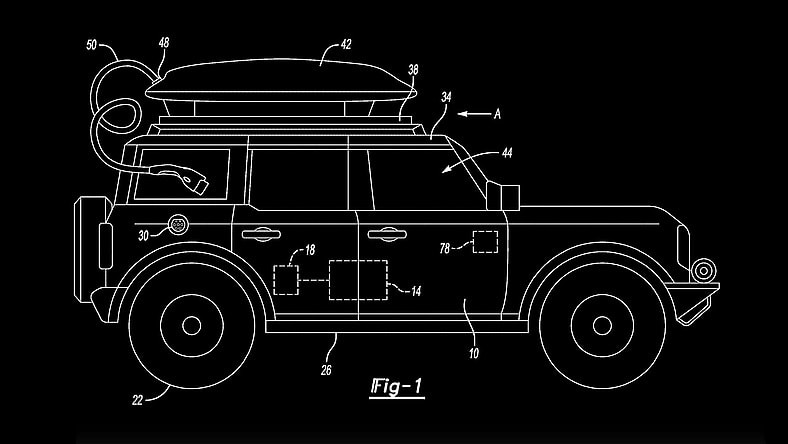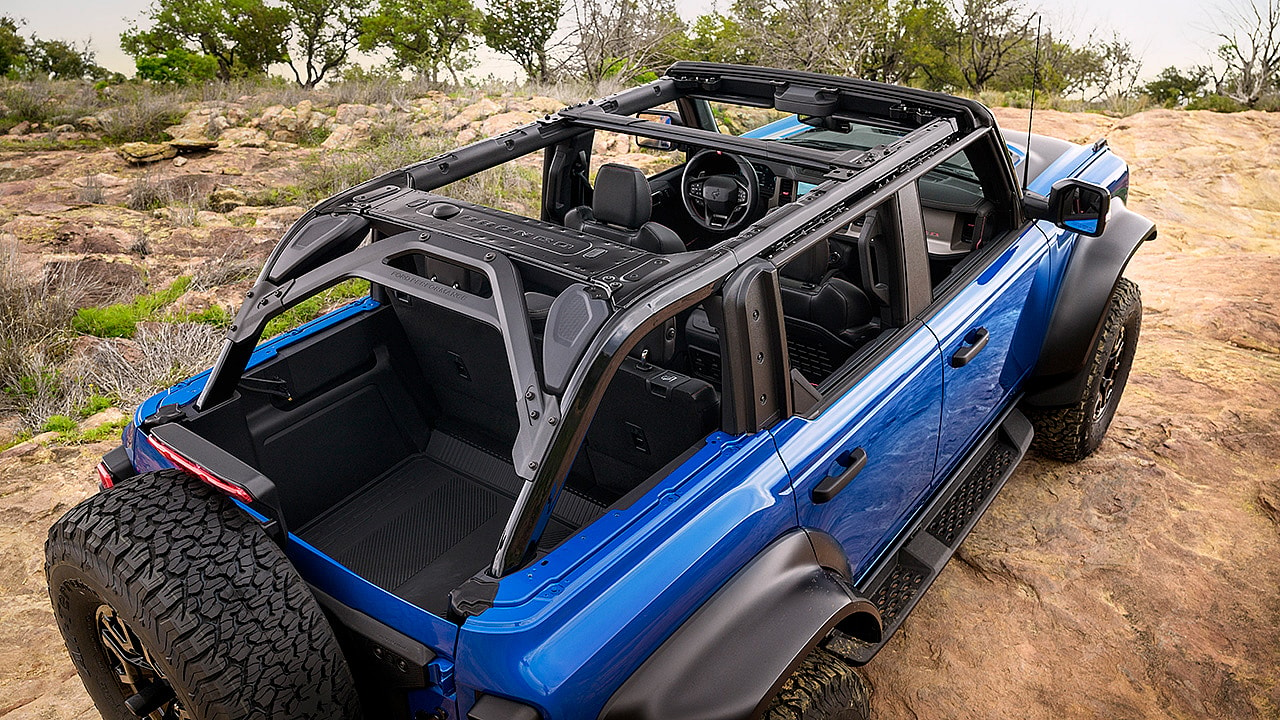Ford Patented A Roof-Mounted Backup Battery For Electric Vehicles

Power up! Up top, that is.
Ford has been issued a patent for an electric vehicle backup battery installed in an unusual place.
The patent is for a roof rack-mounted battery pack that could extend the useful range of a vehicle and the sketches depict it on something that looks like a Bronco SUV.
However, it goes on to say that it could work with either a body-on-frame truck like the Bronco or a unibody vehicle.
JEEP WRANGLER V FORD BRONCO V TOYOTA 4RUNNER: WHICH IS THE USA’S FAVORITE OFF-ROAD SUV?

One use case for the feature that’s mentioned in the description is for taking an electric vehicle on a long drive to a campsite without power, then using the battery to recharge it for the ride home. Ford suggests that the batteries could be sold by aftermarket companies or rented out for trips.
The installation suspends it over the roof with space underneath, which would aid cooling, according to the description.
What the patent doesn’t explain is the installation process for what would be a very heavy piece of equipment. Electric car batteries often weigh more than 10 pounds per kilowatt-hour of capacity and larger vehicles require about 100 kWh for 300 miles of range.
FORD’S MILLENNIUM FALCON PICKUP LOOKS LIKE A TESLA CYBERTRUCK IN NEW PATENT
Getting a pack that weighs hundreds of pounds onto the roof is one thing, but it also creates stability issues by raising the vehicle’s center of gravity, which also isn’t mentioned in the patent, nor is the design of a rack to support it.
The current Ford Bronco’s roof rack has a dynamic weight limit of 110 pounds, while the larger Ford Expedition is rated for 125 pounds.
Ford hasn’t announced any plans for a fully electric Bronco or other camping-oriented electric SUV and has delayed the launch of an electric three-row SUV to at least 2027, so it has some time to iron out the details if it really intends to put this kind of accessory into production.
